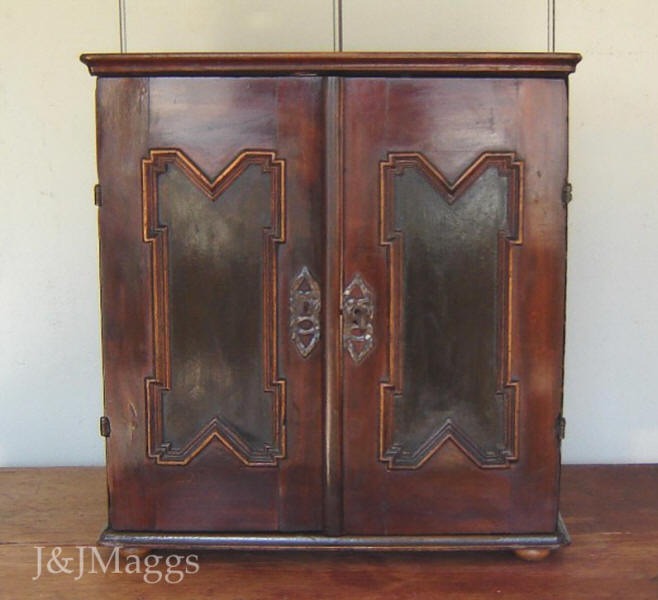
Jan and John Maggs Antiques
The Dutch Spice Cabinet
~~~~~~~~~~~~~~~~~~~~~~~~~~~~~~~~~~~~~~~~~~~~~~~~~

~~~~~~~~~~~~~~~~~~~~~~~~~~~~~~~~~~~~~~~~~~~~~~~~~
Several years ago we bought this beautiful spice box at an outdoor fair in England from a Dutch dealer we'd known for more than a decade.
Made in Holland in the late seventeenth century with contrasting woods and applied geometric mouldings, it is a striking example of this rare form.
~~~~~~~~~~~~~~~~~~~~~~~~~~~~~~~~~~~~~~~~~~~~~~~~~
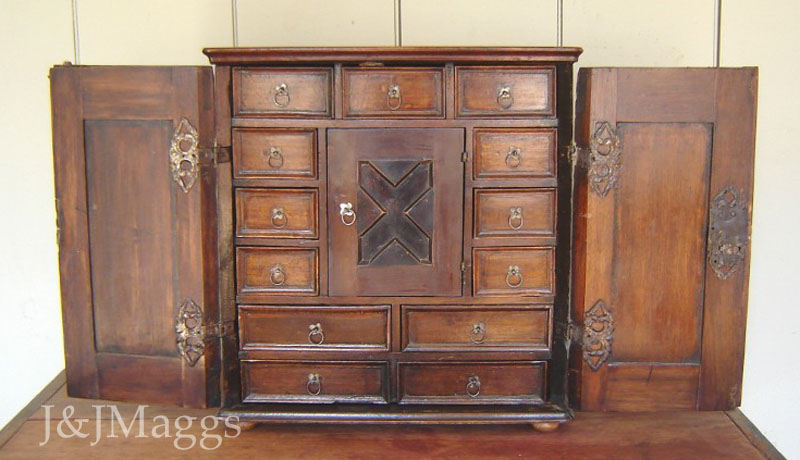
When the two exterior doors are opened, they reveal an interior fitted with thirteen individual drawers surrounding a small cupboard.
The central cupboard is secured by a panelled door, and the door and the drawers are decorated with more applied mouldings.
~~~~~~~~~~~~~~~~~~~~~~~~~~~~~~~~~~~~~~~~~~~~~~~~~
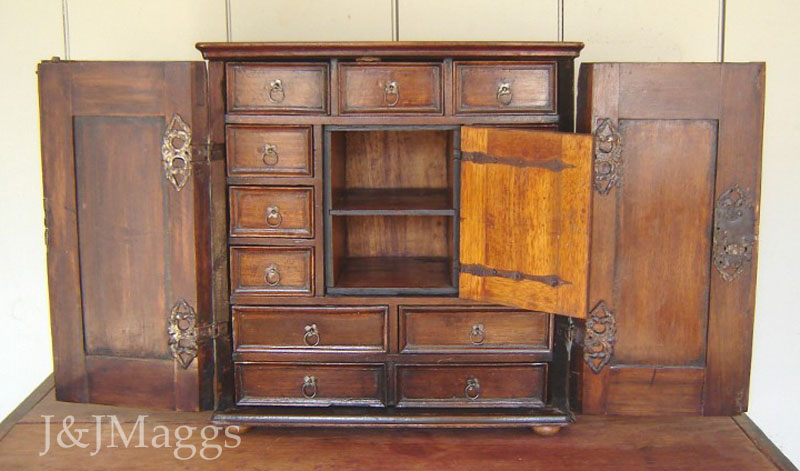
The little cupboard in the center has a single medial shelf and appeared to have been made to be removeable.
For the time being, we left it in place.
Even after 300 years, it retains most of its original wrought iron hardware, and only three or four small pieces of mounding had been replaced.
~~~~~~~~~~~~~~~~~~~~~~~~~~~~~~~~~~~~~~~~~~~~~~~~~
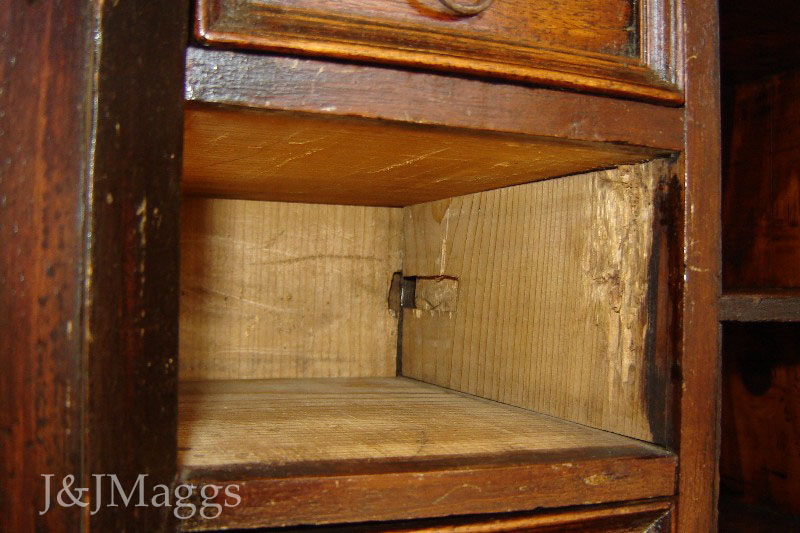
We had inspected the chest on the field, and were satisfied with its condition, but once we got it home, we continued our examination in more detail.
In the process we discovered a puzzling incongruity. At the rear of each of the two middle drawers was an empty mortise.
Everyone knows that empty mortises require explanation.
~~~~~~~~~~~~~~~~~~~~~~~~~~~~~~~~~~~~~~~~~~~~~~~~~
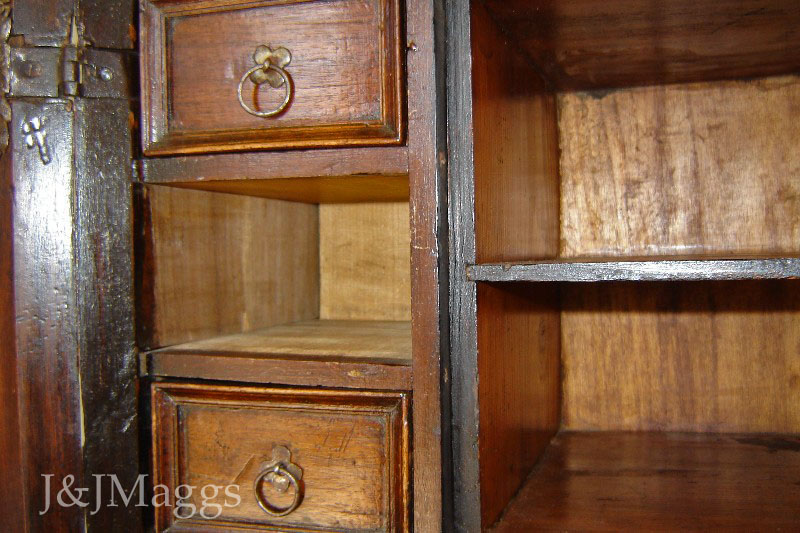
Our quest for the answer led us to the discovery that the two drawer sections flanking the central compartment were shallower than the center section.
It's no surprise to find hidden compartments in these fancy boxes. Clearly, there was space behind the side drawers.
But, as the walls of the center section extend to the rear of the chest, how is one meant to access the hidden compartment?
~~~~~~~~~~~~~~~~~~~~~~~~~~~~~~~~~~~~~~~~~~~~~~~~~
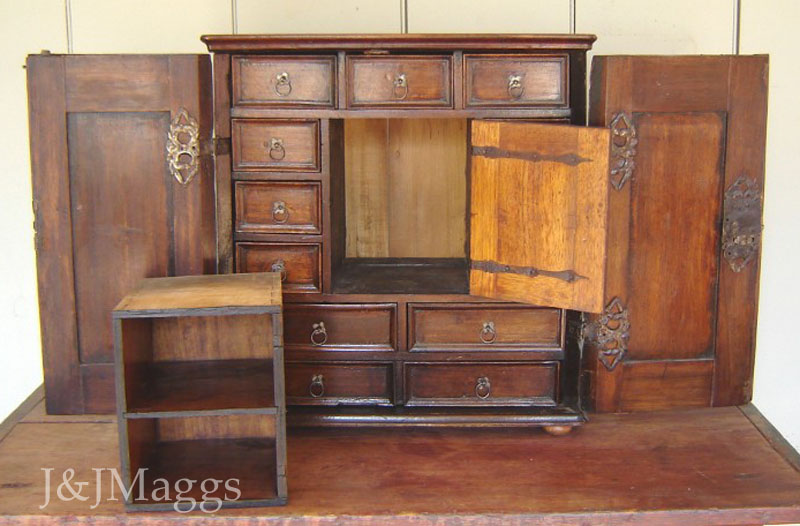
Believing now that one was meant to reach around the back of the side drawers, we removed the center cupboard and looked for openings at the rear.
There were none.
Rather, we found that each of the side galleries had a false back, which can only be slid into the center section when the center cupboard is removed.
And this is when we discovered the best part.
~~~~~~~~~~~~~~~~~~~~~~~~~~~~~~~~~~~~~~~~~~~~~~~~~
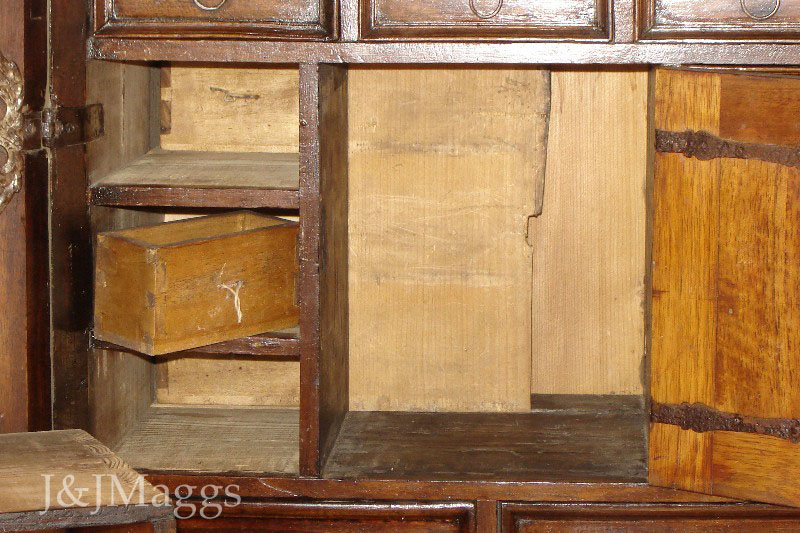
Behind each of the flanking sets of small drawers is a false back, which may be slid to the center once the small cupboard has been removed.
Behind each group of three flanking drawers is a second set of three shallow drawers.
The six tiny drawers are concealed by two sliding panels, one on each side.
One may only surmise that these secret drawers were hiding places for things more valuable than those stored in the drawers in front.
Each of the six little drawers has a small loop of string, which served as a pull without consuming precious space.
Damage to the sliding panels behind which these little drawers are concealed and wear on the outsides of the little drawers themselves indicates that they were accessed frequently.
Sadly, we found that they contained no gold coins or deeds to canal houses in Amsterdam --
but what a wonderful and rare find!
~~~~~~~~~~~~~~~~~~~~~~~~~~~~~~~~~~~~~~~~~~~~~~~~~
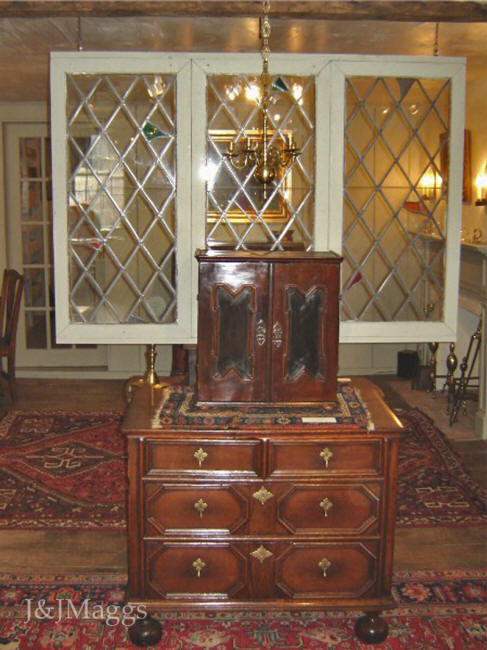
The spice cabinet made its first American appearance at our Spring 2007 fair. It was the first piece to sell.
~~~~~~~~~~~~~~~~~~~~~~~~~~~~~~~~~~~~~~~~~~~~~~~~~